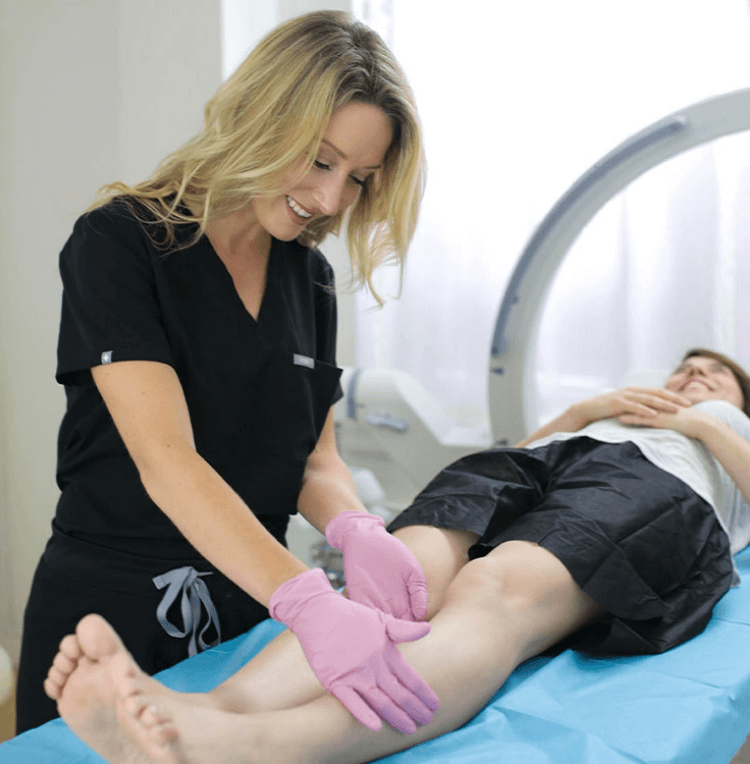Millions of individuals worldwide suffer from varicose veins, a common medical disease. They develop when the veins in your legs grow, twist, and bulge, resulting in pain, swelling, and discomfort. Although varicose veins do not pose a life-threatening threat, they can have serious side effects if left untreated. The causes, signs, symptoms, treatments, and preventative measures of varicose vein problems will all be covered in this article.
What Are Varicose Veins?
Varicose veins can appear anywhere in the body, but there are more chances to appear in the legs and feets. Varicose veins are twisted, enlarged veins typically developing in the legs. They are brought on by dysfunctional vein valves, which make it more difficult for blood to return to your heart. Blood builds up in the veins; as a result, causing them to enlarge and twist.

Symptoms Of Varicose Veins
On the legs, varicose veins frequently appear as twisted, bulging veins. Many individuals with varicose veins, however, have no symptoms. Among the most typical signs are:
heaviness or aching legs:-
- Legs, ankles, or foot swelling
- Legs that are itching or burning
- Leg cramps that are more severe at night
- irritation or skin discoloration nearby affected veins
Treatment Options For Varicose Veins
Depending on the severity of the issue, there are many varicose vein therapy methods. Some of the most typical therapies are listed below:
Conservative Treatment
- Varicose veins can be treated conservatively with lifestyle modifications and self-care techniques like:
- Regular exercise will strengthen the muscles in your legs and enhance circulation.
- To relieve the pressure on your veins, maintain a healthy weight.
- Increase blood flow by raising your legs above the level of your heart to lessen edoema.
- Put pressure on your veins by wearing compression stockings to increase blood flow.
- Avoid standing or sitting for extended periods to reduce the strain on your veins.
Minimally Invasive Procedures
The nonsurgical therapies, minimally invasive, can be done in a doctor's office. They consist of the following:
Sclerotherapy
The vein is sealed off by a chemical injection, which causes it to contract and vanish.
Endovenous Laser Therapy
The vein is heated and sealed off using a laser.
Radiofrequency Ablation
The vein is heated and sealed off using radiofrequency radiation.
Surgical Procedure
Surgery is often only used to treat severe varicose veins or when all other nonsurgical options have failed. They consist of the following:
Vein Stripping
A tiny incision is made to remove the troubled vein.
Ambulatory Phlebectomy
Several tiny incisions are made to remove the vein.
Endoscopic Vein Surgery
The vein is seen and removed using a small camera.

Prevention Of Varicose Veins
While varicose veins cannot always be prevented, there are several measures you can take to reduce your risk of developing them. These include:
- Regular exercise will strengthen the muscles in your legs and enhance circulation.
- To relieve the pressure on your veins, maintain a healthy weight.
- Avoid standing or sitting for long hours in one place to lessen the strain on your veins.
- Increase blood flow by raising your legs above the level of your heart to lessen edoema.
- Put pressure on your veins by wearing compression stockings to increase blood flow.
What is A Vein Center? A vein center is a place to identify, diagnose and suggest the effective line of treatment related to vein problems such as deep vein thrombosis, spider veins, venous insufficiency, and varicose veins.
Conclusion
Uncomfortable and painful varicose veins are a frequent ailment. Although they typically do not pose a life-threatening threat, they can have serious consequences if untreated. Depending on how severe the illness is, there are many treatment options. Self-care practices and lifestyle changes can help avoid the emergence of varicose veins.
Article Source : https://www.healthewriting.com/what-are-the-symptoms-treatment-and-prevention-of-varicose-veins/





